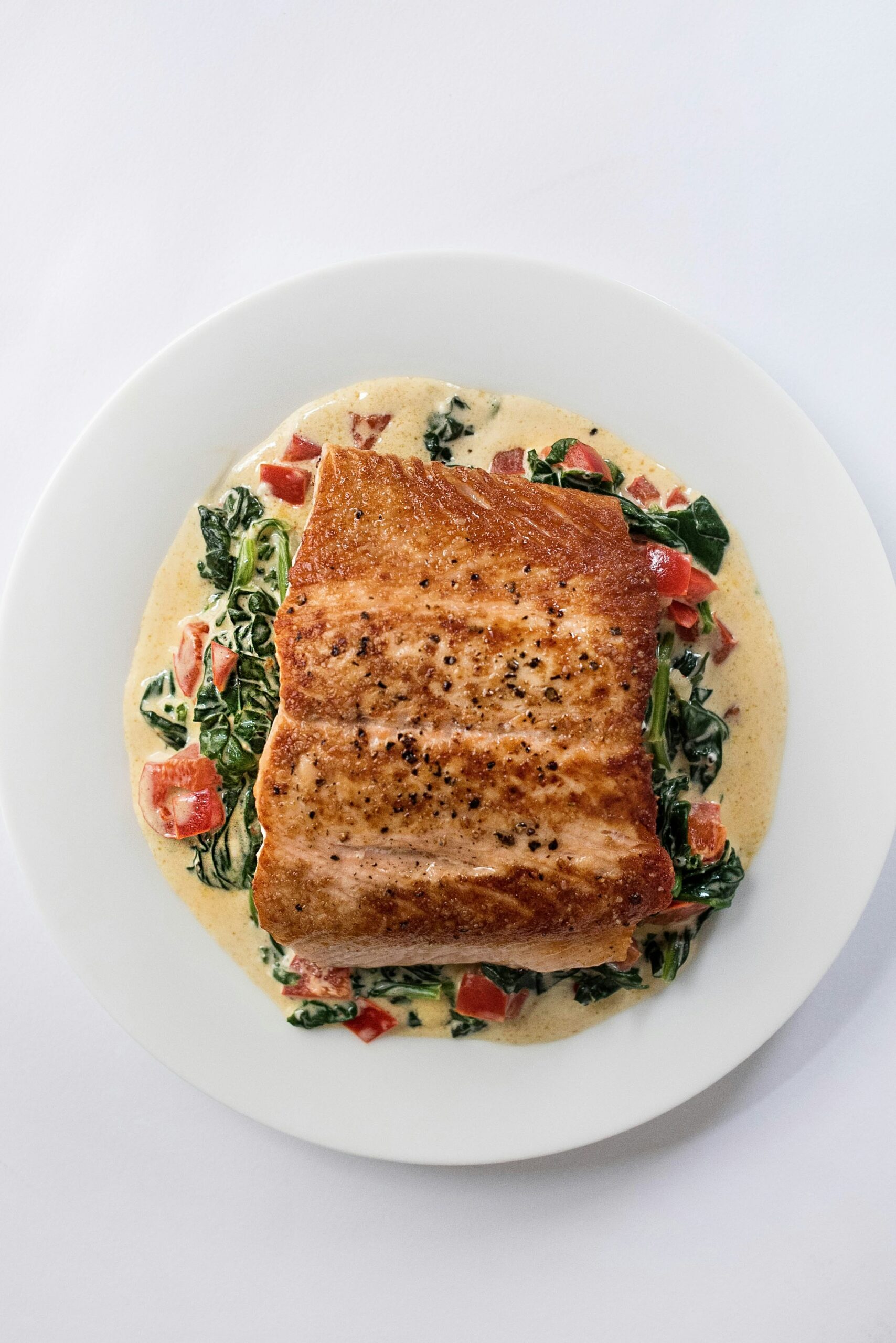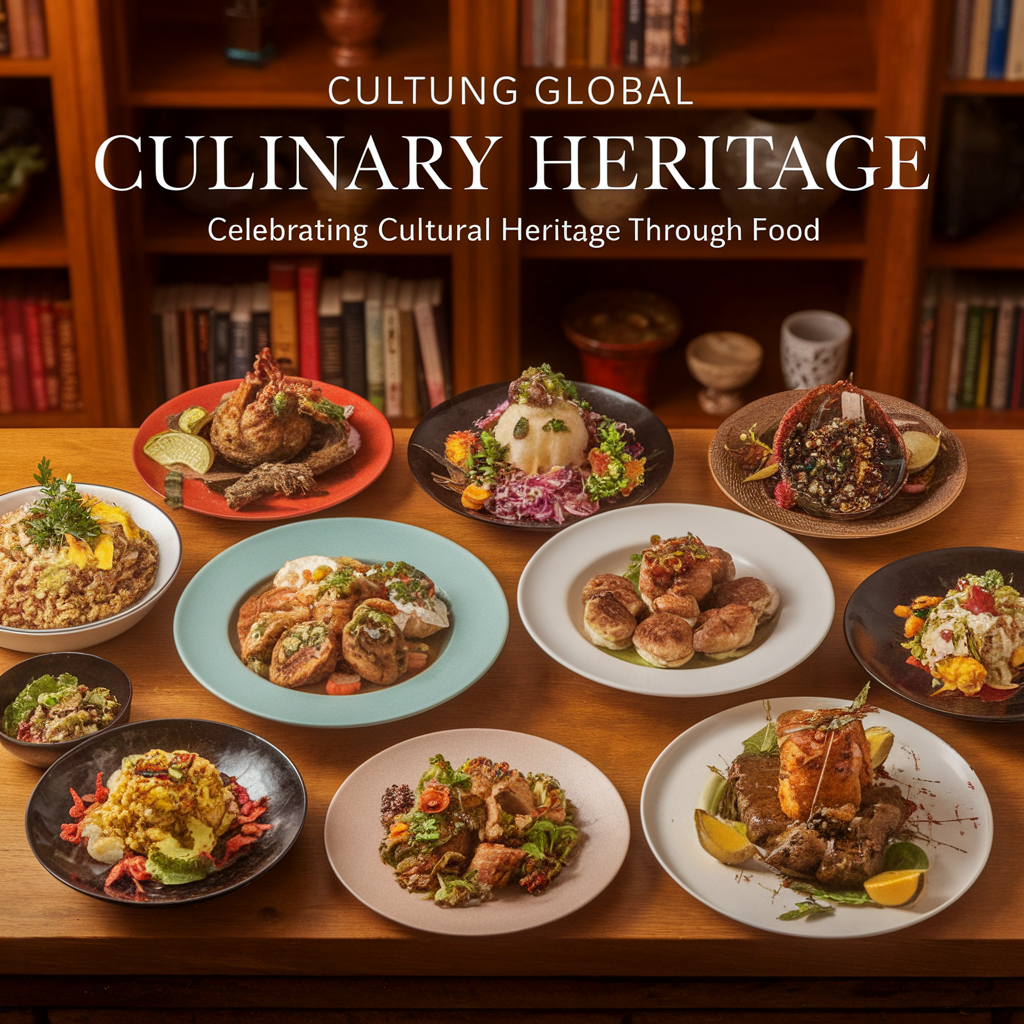Savoring the World: A Journey Through Global Culinary Delights
Traveling through the world of food is akin to embarking on a thrilling adventure—one that unfolds with each bite, each flavor, and each aroma. The moment you step into a new country, your senses are bombarded with the tantalizing scents wafting from street vendors, the colorful displays in local markets, and the vibrant conversations that accompany meals shared among family and friends. Culinary experiences, after all, are more than mere sustenance; they are inextricably linked to culture, history, and identity. So, grab your fork, and let’s set off on a gastronomic journey around the globe!
From Street Food to Fine Dining
One of the most delightful aspects of global cuisine is the incredible range of dining experiences it offers. Just think about it: you could be savoring a spicy taco from a bustling street cart in Mexico, then in the blink of an eye, find yourself indulging in an opulent multi-course meal at a Michelin-starred restaurant in France. Each setting tells a story—a narrative of tradition, innovation, and sometimes, even rebellion against culinary norms.
Take, for instance, the humble taco. Originating from Mexico, this portable meal is not just a fast food option but a canvas for culinary creativity. Street vendors across Mexico City serve tacos filled with everything from marinated pork to sautéed mushrooms, topped with a medley of fresh salsas and herbs. (I remember when I tried a taco al pastor for the first time—it was a revelation!) The way the flavors meld together, the crunch of fresh vegetables against the richness of the meat—it’s an experience that’s hard to replicate.
On the other end of the spectrum, you have the refined elegance of dining in France. A meal at a Michelin-starred establishment feels like stepping into a different realm. Here, chefs are not just cooks; they are artists. For example, a dish like coq au vin, typically a simple rustic meal, is transformed into a masterpiece, featuring tender chicken steeped in a rich red wine sauce, served alongside truffle-infused potatoes. The attention to detail, the presentation, and the flavors combine to create an unforgettable experience. You leave with a full belly and a heart that’s a little lighter, filled with the joy of culinary exploration.
Cultural Significance of Cuisine
Food is not merely about the ingredients or the cooking techniques; it’s a reflection of cultural identity. Each dish has a story, often steeped in tradition and history. For example, consider the Japanese tea ceremony—a practice that goes beyond simply drinking tea. It’s an art, a ritual that emphasizes harmony, respect, purity, and tranquility. The meticulous preparation of matcha, the way it’s served, and the setting all contribute to a profound experience that transcends the beverage itself.
In contrast, take the vibrant festivals of India, where food plays a central role in celebrations. Dishes like biryani or sweets like gulab jamun are prepared in large quantities, bringing families and communities together. The act of sharing a meal during festivals like Diwali or Eid becomes a way of expressing love and solidarity. Food, in these contexts, becomes a binding agent—uniting diverse cultures, traditions, and generations.
Exploring the Spice Route
Spices are the lifeblood of many cuisines, each carrying its own tale of trade, exploration, and discovery. The ancient Spice Route, which connected East and West, facilitated the exchange of flavors, cultures, and ideas. Just think of how cinnamon traveled from Sri Lanka to become a staple in European baking, or how cardamom found its way into the rich curries of Indian cuisine. It’s a fascinating journey that showcases the interconnectedness of our world.
When you think of spices, you might envision the fiery heat of chili peppers in Mexican dishes or the fragrant cumin and coriander in Middle Eastern cuisine. Each region has its signature spices that not only enhance flavors but also tell stories of the land and its people. For instance, saffron, harvested from delicate crocus flowers, is a prized spice in Persian cuisine, often used in luxurious dishes like saffron rice or Persian stews. The painstaking process of harvesting saffron—each flower yields only three red threads—adds to its allure and value.
Fusion Cuisine: Bridging Cultures
In our increasingly globalized world, fusion cuisine has emerged as a fascinating culinary trend. The blending of culinary traditions allows for a unique exploration of flavors that can lead to exciting results. Think of the sushi burrito that combines the freshness of sushi with the portability of a burrito, or Korean tacos that fuse the bold flavors of Korean BBQ with traditional Mexican staples. It’s a delicious testament to the creativity of chefs who dare to think outside the culinary box.
However, it’s essential to approach fusion cuisine with respect for its roots. As culinary historian Dr. David Sutton once said, “Fusion is great, but it should be done thoughtfully.” The challenge lies in harmonizing flavors while honoring the traditions from which they originated. When done right, fusion cuisine can create remarkable dishes that celebrate diversity and innovation.
The Sweet Side of Global Cuisine
Now, let’s not forget the sweet side of this culinary journey! Desserts are often the crowning glory of any meal, and across the globe, they reflect a rich tapestry of flavors and techniques. From the delicate French macarons to the creamy Italian tiramisu, sweets often hold a special place in the hearts of those who enjoy them.
Consider the iconic baklava from the Middle East—a pastry made of layers of filo dough, filled with chopped nuts and sweetened with honey or syrup. It’s not just a dessert; it’s a labor of love, often prepared during special occasions and celebrations. I remember being served warm baklava at a friend’s family gathering, the honey dripping down my fingers as I savored each bite. It was a moment that encapsulated the essence of hospitality and shared joy.
Then there’s the world of chocolate, which transcends borders and cultures. From the rich dark chocolates of Belgium to the smooth, creamy varieties of Switzerland, chocolate has a way of bringing people together. In fact, chocolate was once considered so valuable that it was used as currency in ancient Mesoamerican cultures. Who wouldn’t want to be paid in chocolate, right?
The Role of Sustainability in Global Cuisine
As we savor the diverse flavors of the world, it’s crucial to consider the impact of our culinary choices on the environment. The rise of farm-to-table dining and sustainable practices reflects a growing awareness of the need to protect our planet. Many chefs are now prioritizing local, organic ingredients that not only support local economies but also reduce the carbon footprint associated with food transportation.
Moreover, culinary movements like zero-waste cooking are gaining traction, encouraging chefs and home cooks alike to utilize every part of an ingredient. For instance, vegetable scraps that would typically be discarded can be transformed into flavorful stocks or garnishes. This not only minimizes waste but also fosters creativity in the kitchen. As chef Dan Barber once said, “The best food is the food that’s born out of a relationship with the land.”
Food Tourism: A Taste of Adventure
Food tourism has blossomed into a vibrant sector within the travel industry. Adventurous travelers are seeking culinary experiences that allow them to immerse themselves in local culture. Whether it’s taking a cooking class in a Tuscan villa or embarking on a street food tour in Bangkok, these experiences provide a deeper understanding of a destination.
Imagine wandering through the bustling markets of Marrakech, where the vibrant colors and aromas entice you to sample local delicacies. Or perhaps you find yourself in a traditional Italian kitchen, learning how to make pasta from scratch alongside a nonna who smiles knowingly as you fumble with the dough. These moments create lasting memories that transcend the act of eating; they connect you to people and places in a profound way.
The Importance of Food in Building Connections
In many cultures, food serves as a communal experience, a bridge that connects people across generations and backgrounds. The act of sharing a meal fosters bonds, encourages dialogue, and creates a sense of belonging. In countries like Ethiopia, for instance, communal dining is a cherished tradition, where friends and family gather around a large platter of injera topped with a variety of stews.
As you break bread together, the barriers that may separate us begin to dissolve. Food has a unique ability to spark conversations, to ignite laughter, and to forge connections that might not have otherwise existed. When we share a meal, we share stories, history, and ultimately, a part of ourselves.
Final Thoughts: A Culinary Adventure Awaits
As we conclude this culinary journey, it’s clear that the world of food is a rich and diverse tapestry, woven from countless threads of culture, tradition, and innovation. Each dish tells a story, and each flavor reveals a glimpse into the heart of a community. Whether you’re indulging in street food or dining at a fine restaurant, remember that every bite is an opportunity to explore, learn, and connect.
So, the next time you find yourself at a new restaurant or cooking a dish from a different culture, take a moment to appreciate the journey that brought those flavors to your plate. Savor it, relish it, and above all, enjoy the adventure that is eating around the world. After all, as they say, life is too short to skip dessert!
Bon appétit!




